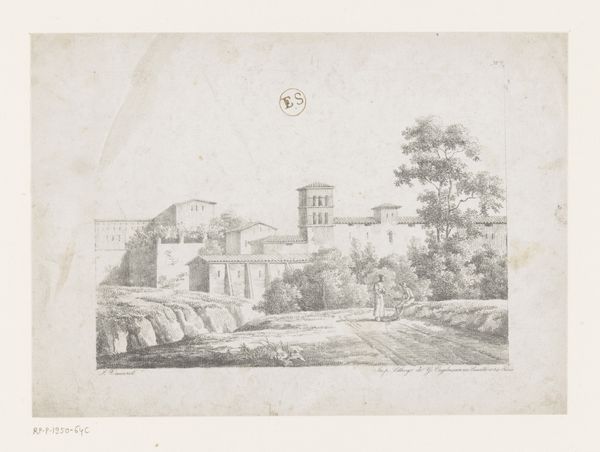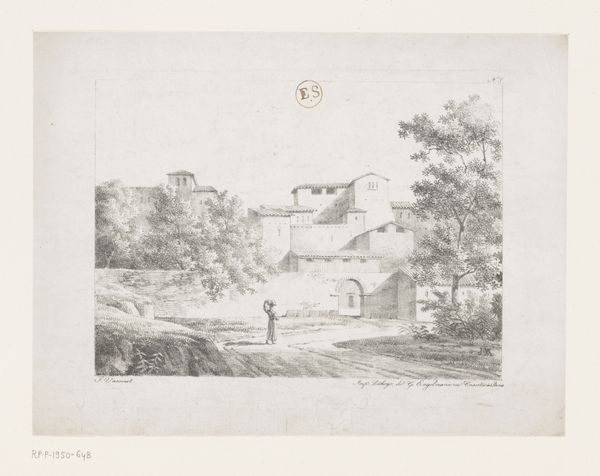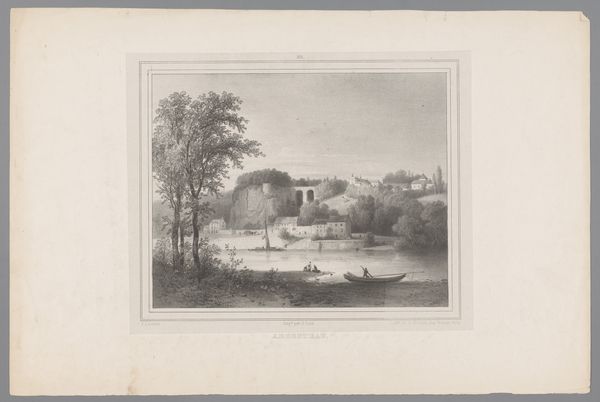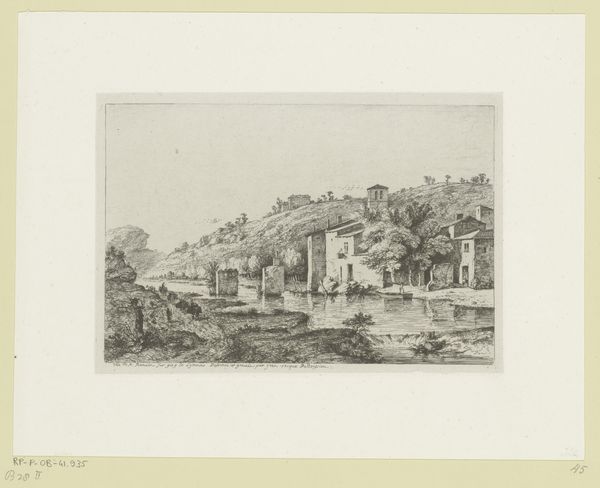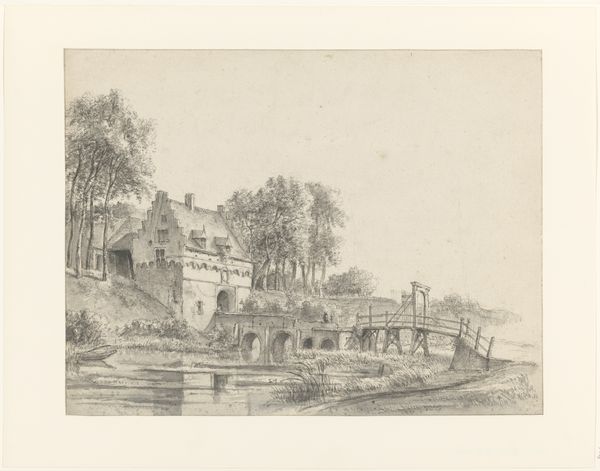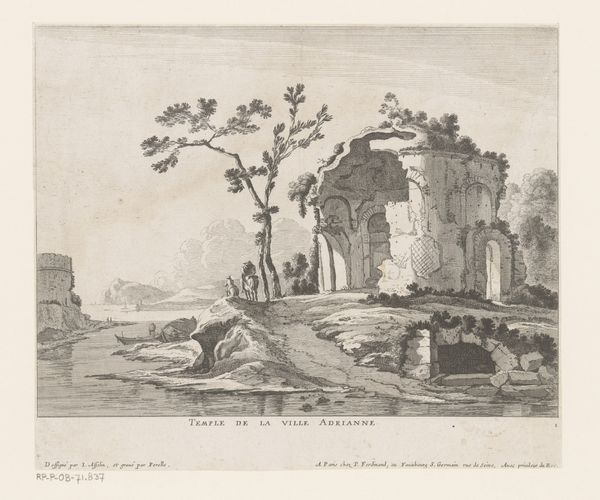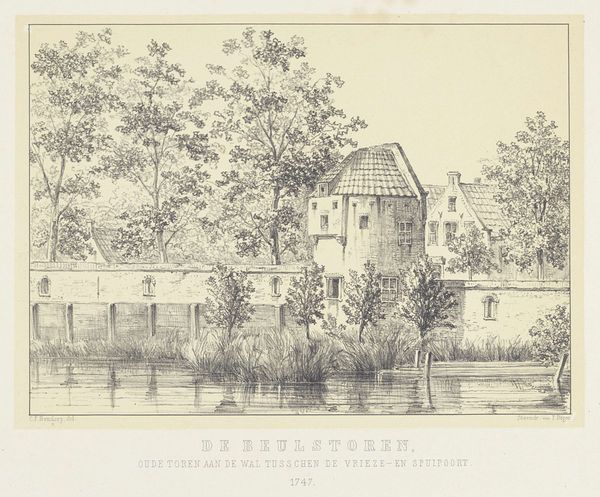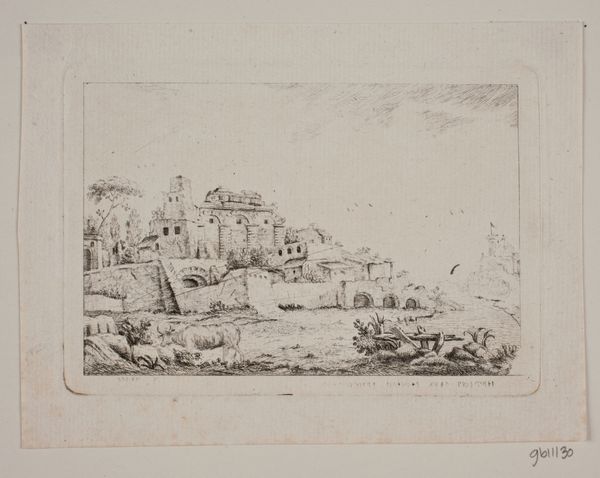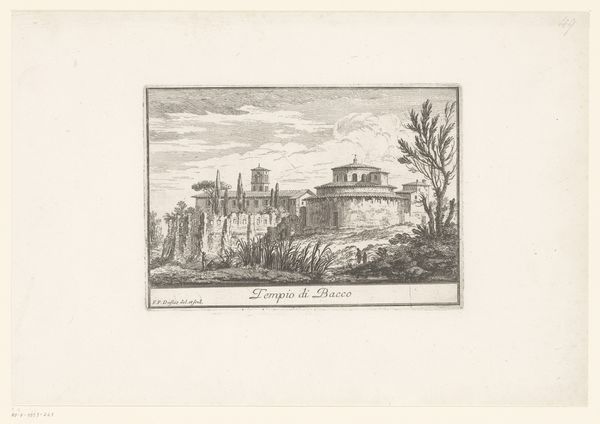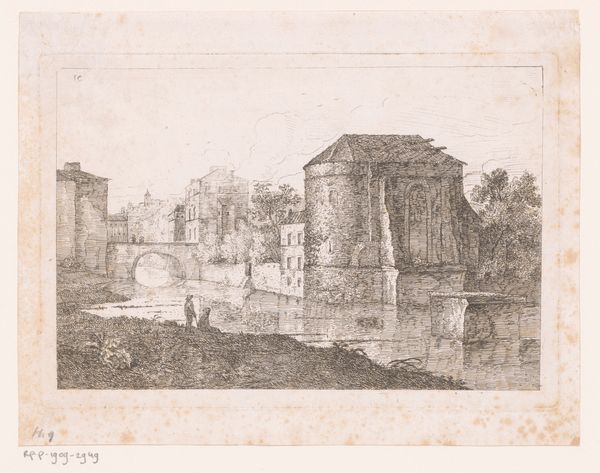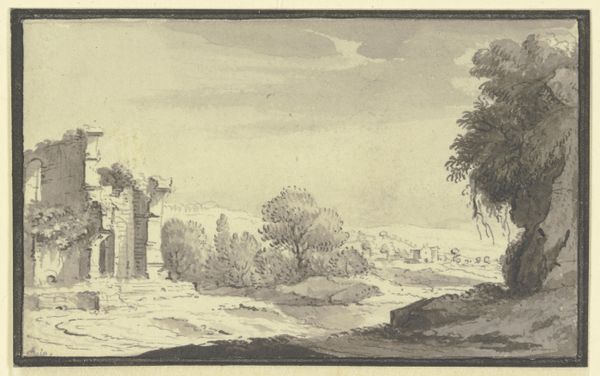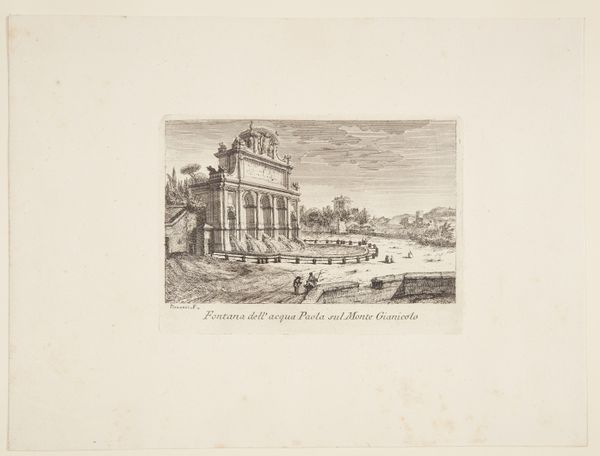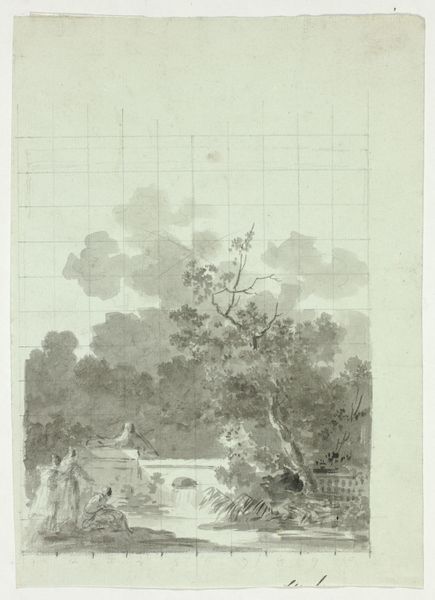
aquatint, drawing, etching, intaglio, pencil, engraving
#
aquatint
#
drawing
#
medieval
#
etching
#
intaglio
#
pencil sketch
#
landscape
#
perspective
#
romanticism
#
pencil
#
cityscape
#
tonal art
#
engraving
Dimensions: height 230 mm, width 304 mm
Copyright: Rijks Museum: Open Domain
Editor: This is "Italian Villa on the Water," an etching, aquatint, engraving, and pencil drawing by Jean Vasserot from the early 19th century. I’m struck by the starkness of the architecture against the natural landscape, that almost feels like a stage set. What details stand out to you in terms of materials and their impact? Curator: It's interesting you see a "stage set." Consider the social context for intaglio prints like this; they were often commissioned or made as relatively inexpensive artworks, meant to be collected or traded. The production and accessibility of prints in the Romantic era allowed for broader consumption of images of places like Italy, right? It also shaped what aspects of Italy people got to see, framing certain picturesque views in a certain light. How do you think the layering of techniques – the etching, aquatint, engraving – influences how we perceive this place? Editor: Well, combining etching and aquatint makes sense for contrasting textures and detail, allowing for sharp architectural lines alongside soft, tonal water and foliage. Could it suggest an intended market or consumer for this particular type of work, focusing on affordability and aesthetic appeal? Curator: Exactly. Vasserot and the publisher marketed directly to travelers in need of mementos, as we can read on the imprint on the image, where it says that the view can be purchased at the Caffè degli Inglesi. That speaks directly to consumerism and the cultural interest of that period in affordable imagery depicting tourist locations. How might the act of creating multiple prints democratize the viewing and owning of art in that era? Editor: That’s interesting! Mass production meant more people could access views like this, which is still relevant in today's context of accessible art. Curator: Precisely. And perhaps reflecting on Vasserot’s intent, materials and labor, shifts our perception away from pure aesthetics and towards the means of art production, connecting us to those networks of exchange that were vital.
Comments
No comments
Be the first to comment and join the conversation on the ultimate creative platform.
